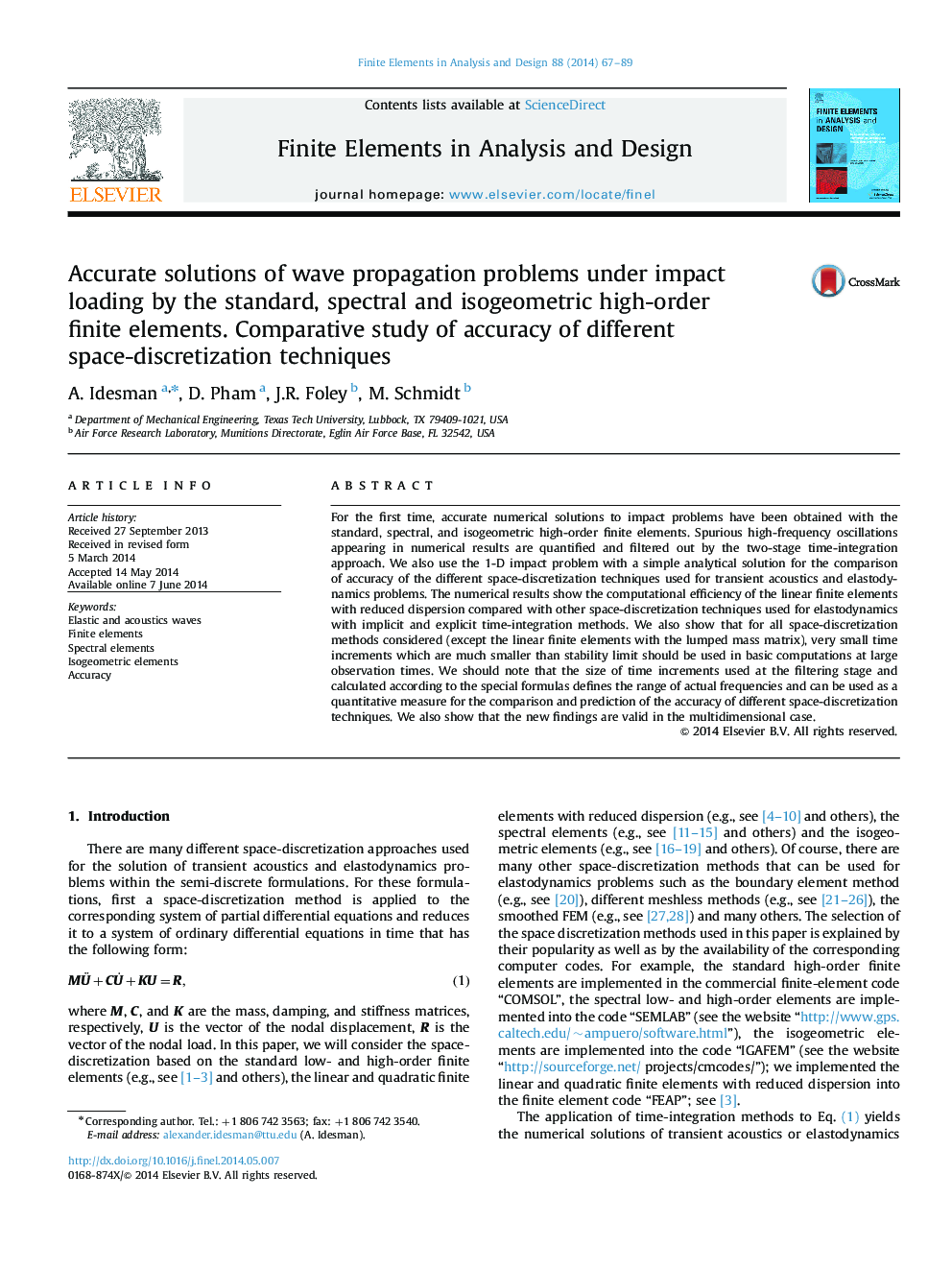| Article ID | Journal | Published Year | Pages | File Type |
|---|---|---|---|---|
| 513915 | Finite Elements in Analysis and Design | 2014 | 23 Pages |
•Accurate solutions to impact problems with the spectral and isogeometric elements.•The linear elements with reduced dispersion are very computationally efficient.•Time increments should be much smaller than the stability limit at large times.•The size of time increments at the filtering stage can serve as a measure of accuracy.
For the first time, accurate numerical solutions to impact problems have been obtained with the standard, spectral, and isogeometric high-order finite elements. Spurious high-frequency oscillations appearing in numerical results are quantified and filtered out by the two-stage time-integration approach. We also use the 1-D impact problem with a simple analytical solution for the comparison of accuracy of the different space-discretization techniques used for transient acoustics and elastodynamics problems. The numerical results show the computational efficiency of the linear finite elements with reduced dispersion compared with other space-discretization techniques used for elastodynamics with implicit and explicit time-integration methods. We also show that for all space-discretization methods considered (except the linear finite elements with the lumped mass matrix), very small time increments which are much smaller than stability limit should be used in basic computations at large observation times. We should note that the size of time increments used at the filtering stage and calculated according to the special formulas defines the range of actual frequencies and can be used as a quantitative measure for the comparison and prediction of the accuracy of different space-discretization techniques. We also show that the new findings are valid in the multidimensional case.
